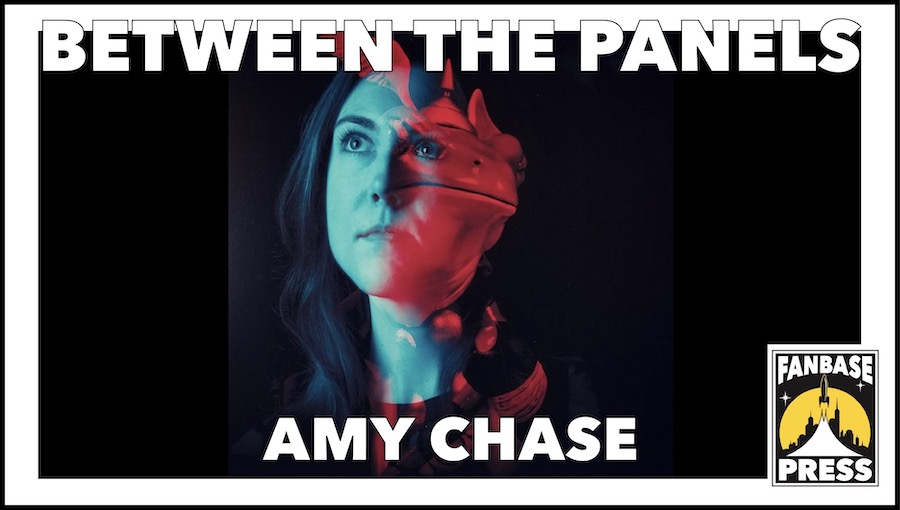“Between the Panels” is a monthly interview series focusing on comic book creators of all experience levels, seeking to examine not just what each individual creates, but how they go about creating it.
Pop quiz: What do Archie, Ghostbusters, Dungeons & Dragons, and My Little Pony have in common? Answer: They’re all properties that have been handled by writer Amy Chase. (Well, there may be more than one answer to that question, but you get the idea.) From writing fanfic to entering the Mad Cave Talent Search, Amy’s journey into comics has been one of dedication to her craft and belief in herself.
First off, the basics…
Your specialties (artist/writer/letterer/inker/etc.): Writer
Your home base: Southern California
Website: amythunderjam.com
Social Media
Instagram: @amythunderjam
Twitter: @ifshebeworthy
Bluesky: @amythunderjam.bsky.social
Substack: substack.com/@amythunderjam “Thunderbolts and Writing” Newsletter
Fanbase Press Contributor Kevin Sharp: As someone who’s written in other formats, what does the comics medium offer you that keeps you coming back?
Amy Chase: For me, comics provide a collaborative aspect that I really love. With solo prose, I have a tendency to get into my own head and I can be a harsh critic. I think everyone is hard on themselves working alone. But when you put me on a team where I have an opportunity to hype up someone else’s work and expand my own ideas with their unique perspective, it makes everything feel more exciting and manageable.
There’s also an element of surprise for me, watching the artists and colorists bring their unique brand of creativity to a page. I like to go into comics with an open mind about how the finished result will look, and so seeing each new step in my inbox reignites the excitement for the project, whereas with my short stories I tend to feel like I already know how everything will and should turn out, and, eventually, I get numb to my own writing.
KS: Please tell readers a bit about where you grew up and what type of media made up your creative diet in childhood… movies, books, TV, etc.
AC: I was born and raised – and will probably eventually die – in Southern California. I had absolutely no shortage of good entertainment available to me, which has made my brain into the pop culture miasma it is today. I was a book nerd first and foremost, devouring countless novels at a speed I could only dream of nowadays. I won’t lie, the Harry Potter books and films were such a huge part of my childhood, as the real first “cultural event” I remember taking part in with new releases. I also grew up watching the OG Teen Titans cartoon, lots of The Simpsons, and a bunch of anime dubs on 4Kidz TV. I also played an immense amount of Pokemon, and lots of games on my still-functioning Gamecube.
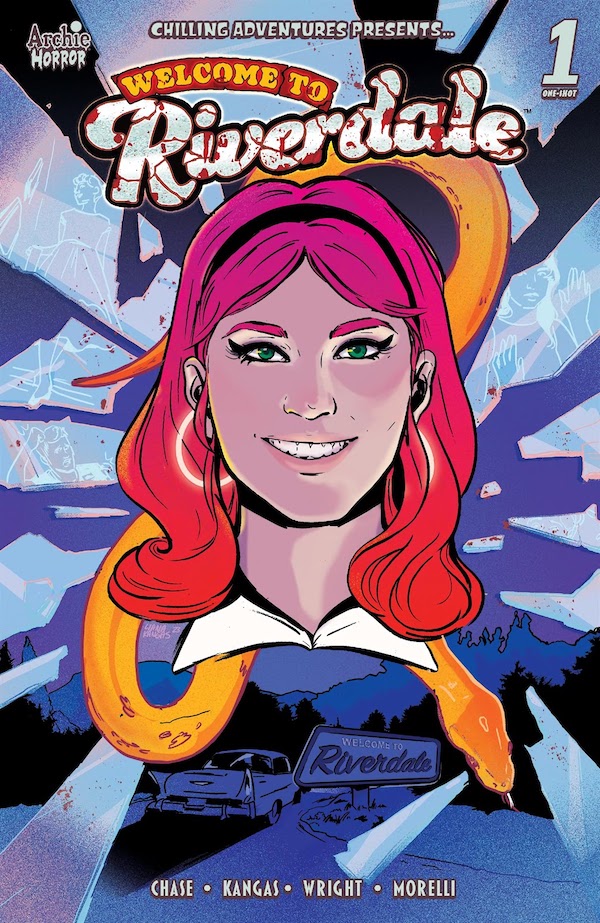
KS: As someone in the same situation, I have to ask about your typical reading pace back then.
AC: Oh, man. I definitely remember “college reading level” being bandied around when I was in third grade. Our classroom had those SRA reading packets which I loved. I could often read a chapter book in a week or two depending on how into it I was. I devoured a lot of Warrior Cats and Percy Jackson in particular. Hilariously, in college it was so hard to get me to read with the same fervor as I had all those years prior.
KS: What about your introduction to comics? Not necessarily the first one you ever read, but your earliest memories. Would these have been newspaper strips or actual comic books?
AC: The absolute earliest intro to comics I had was the funny pages in the LA Times, which my dad and I would always read together before he took me to school. On Sundays, we’d take turns with the full-color section, and I frequently bought collected editions of all my favorites – Foxtrot (Bill Amend), Pearls Before Swine (Stephen Pastis), and, of course, Calvin and Hobbes (Bill Watterson) were the most frequent. But I would read pretty much every strip I could more or less understand the jokes in – Bizarro, Brewster Rockit: Space Guy, Baby Blues, Zits, Get Fuzzy, and Drabble were also all constants. My dad and I still send each other weekly Pearls strips, and I still have a few actually cut out from newspapers that I thought were particularly hilarious.
A little after that, I got really into manga and had a massive collection until it was mistakenly given to Goodwill because I packed them in the wrong box while cleaning my room. But I didn’t actually get to regular monthly comics/the kind I write now until high school after the first Avengers film came out — yes, I was a movies-to-comics convert.
KS: Did watching anime lead you to seek out manga?
AC: Shows like Pokemon, Yu-gi-oh, and Mew Mew Power dubbed on 4Kids TV during my formative years made me want to find books about them. After discovering the manga section at my local Borders Bookstore, the rest was history. Hilariously, the first manga I read was Tokyo Mew Mew Vol. 3 and I read it backwards despite all the Tokyopop publishing books coming with a “STOP, THIS IS THE BACK OF THE BOOK” warning I somehow bypassed. I still comprehended enough of the story to want to go back for more. I also had a tight, nerdy little friend group in middle school, and we were the unabashedly cringey anime kids, so we all traded recommendations and probably drove our teachers wild talking about Fruits Basket, Di Gi Charat, Bleach, and who knows how many other titles.
KS: Did you have regular enough access to be able to latch onto any favorite titles or characters?
AC: Interestingly, I feel like there was a really big disconnect from what I initially wanted out of comics and what was being put out at the time when I was a child – as a diehard Teen Titans animated series fan, the only places I could go were to old issues of the Wolfman/Perez stuff that were rarely found in complete arcs, mostly at garage sales or back issue bins, or to the contemporary TT books which were absolutely not geared towards my demographic. So that really led to me not being able to find a foothold in superhero comics at the time.
I was, however, deeply obsessed with CLAMP manga like Angelic Layer and Magic Knight Rayearth, as well as other magical girl books like Tokyo Mew Mew and Sugar Sugar Rune. I remember drawing my first-ever OCs of Tokyo Mew Mew characters, and they actually carried Tokyopop publications at our elementary school Scholastic Book Fairs for a while.
KS: Speaking of back issue bins, you were obviously buying at a time when I assume there were plenty of comic store options. Were you a regular at any place in particular?
AC: I always got my manga fix at Borders Bookstore, but I didn’t start regularly shopping at comic stores until late high school, roughly circa 2012/Matt Fraction/David Aja’s Hawkeye book hit shelves. That was the first book I ever put on a proper pull list. It was a smaller local store my 8th grade science teacher actually introduced me to, called Comics Ink in Culver City. It was in a little strip mall next to a place that made pretty good chili, which is what most locals remember about that area. Neither Borders nor Comics Ink exist anymore, yet I will carry their spirits with me forever.
KS: Was there any one story that had a special impact on you as a younger reader?
AC: Is it cheating if I have two answers? They both impacted me at the same time for similar, but differing, reasons. At the end of my freshman year of college at the UC Santa Barbara, I’d just begun branching out into more regular monthly comics reading, I think maybe 4 titles a month, which seems quaint now, but it was big to me back then. I was really settling into school and it was almost time for summer break, and then the infamous Isla Vista massacre occurred. And while I thankfully came out of it physically unharmed, I was actually present there and witnessed people who were actively harmed. I had to take shelter during an active crime scene. It was the first time in my life I actually felt like surviving the night was not a guarantee. It absolutely wrecked me as a person for quite a while.
About two months later was when Marvel announced that there would be a mysterious new female Thor taking up the mantle in a new series by Jason Aaron and Russell Dauterman. Thor was my favorite Avenger at that point, but Jane Foster herself was my favorite overall Marvel character — thank the Langridge/Samnee run for that mostly. I’d been in so many mild internet beefs with dudes who were fine with frogs and Korbinites wielding Mjolnir, but they drew the line at a woman. Seeing this announced and being treated as not just a quick gimmick got me beyond excited. It was an overdue idea, but seeing a different character, a female character, who was making the active choice to be worthy of being a hero was incredibly empowering. I think everyone who asked me about the shooting that summer got, “But enough about that, did you hear Marvel has a female Thor now?” tacked on as the bonus change of topic. The first issue of that Thor run came out the very Wednesday I was supposed to start my sophomore year, and it actually gave me a reason to go back to school so I could pick up my pull again. I used each new issue as a milestone to draw myself back out and find something to look forward to throughout the year. And that Wednesday punctuality actually led me to getting a job at that comic store.
The second of these impactful stories was Marvel’s Alias by Brian Michael Bendis and Michael Gaydos, which I read around that same time later in summer. Specifically issue #16, which opens on Jessica Jones in a convenience store when it’s robbed at gunpoint. She hides behind the snack racks until she’s able to help the store owner and stop anyone from being shot, even if she’s not particularly heroic about it. There’s a point where she remarks she’s never gonna leave her house again after that. Reading Alias for the first time, that scene stopped me in my tracks. It was so bleakly mundane, but so exactly like what I had experienced cowering in the back of a 7-Eleven knowing there had been an active shooter outside. Something about seeing a jaded superhero experience something that once made me feel so alone and broken up inside really helped me reflect. Like, what happened to me wasn’t so wildly singular and otherwise impossible that a comic writer couldn’t dream it up for his own story. It was weirdly comforting in that way.
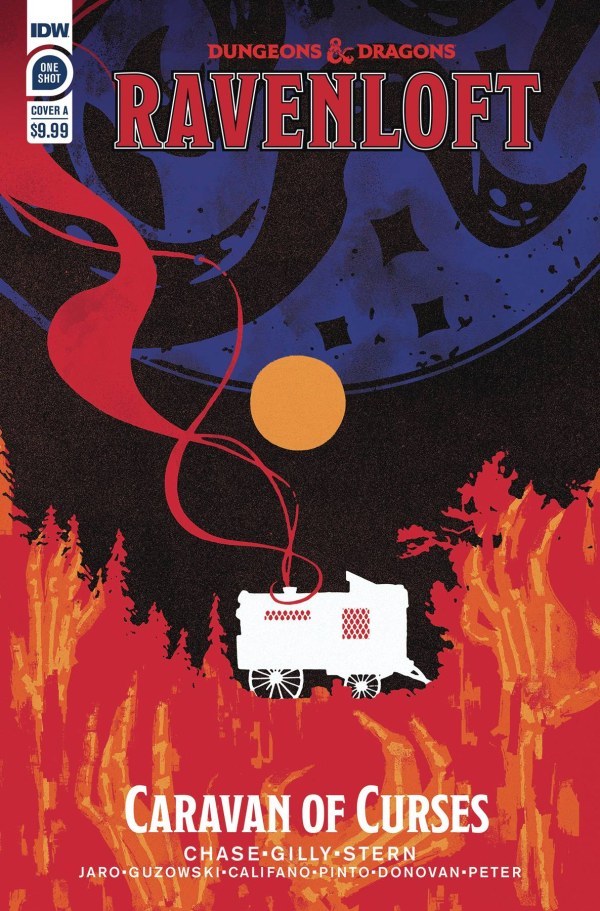
KS: Looking back, those were the right stories for who you were at the time?
AC: I really think those stories were the first pieces of media that I used to help myself cope with trauma. This idea would absolutely come back into my life during the initial years of the pandemic, as well, with other stories that were right for who I was at that time. As I’ve moved forward from that initial tragedy, it’s really shown me the importance of earnest storytelling that can connect with readers on a deeper level, meeting them where they’re at. Up to that point, my love of superheroes had been largely surface level or at least hard to quantify beyond, “They’re so cool and I love what they represent,” but this was a moment of, “No, stories can actually be a way to live and survive and connect to yourself and others on a whole new level.” Very existential, that.
KS: When you first became aware of the writer’s voice in comics, did you find yourself drawn to specific creators?
AC: Yes! I feel like I really got into comics during that specific modern golden era of Marvel about a decade ago (woof…), drawn to the likes of Matt Fraction, Kelly Sue DeConnick, Kieron Gillen, Jason Aaron, and G. Willow Wilson most specifically. Theirs were the first names whose other work I actively sought out between publishers/character runs even if they weren’t my usual fare. But the same would soon go for artists like Jamie McKelvie, Chris Samnee, Phil Noto, and Russell Dauterman as they moved between projects, as well.
KS: What did your writing life look like growing up?
AC: I wrote a lot of goofy, little short stories as a kid on the family computer. Word Docs, Microsoft Paint, and 3D Pinball were my favorite pastimes. But I don’t think I had one definitive style, and I really didn’t begin to seriously write proper — I use that word loosely — fiction until high school. I loved superhero stories and things like Warrior Cats and Swordbird with fantasy animal protagonists, so I initially tried to imitate those to no avail.
I did, however, go hard on the fanfic scene beginning in 2012 after The Avengers came out. Fanfic was the place I really learned to imitate character voice, test new styles of writing, and meet my peers in the fandom space through a mostly-anonymous internet filter and I cannot overstate the importance it has had in my writing trajectory — especially as I move into writing for established licenses which have specific voices and styles to them.
KS: How about your first shot at writing a comic?
AC: I wrote my first original comic with Haley Boros in 2015 for an anthology called They Have Issues, organized by a network of women working in comic book stores at the time. I was still doing a few original short stories in the background as school assignments, but rarely for pleasure. I tried and failed several times to start a novel. And I got into a few comics anthologies here and there between 2016-2018, but from the remainder of 2018-2020, I had absolutely no pitches picked up anywhere. It was rejection on rejection on rejection. I almost gave up entirely until entering the Mad Cave Talent Search in summer 2020 made me want to double down and really find my space in comics. I consider that the true turning point of my writing career as it currently stands.
KS: On a purely craft level, where did you learn to write a comic script before submitting to the first anthology you tried?
AC: I recall there being some online resources at one time where some established creators had shared early scripts of theirs, which I used to get a sense of format and style. I distinctly remember reading a Scalped script by Jason Aaron and something from Kelly Sue DeConnick. I’m not sure if that site still exists, but nowadays there’s a real wealth of scripting information, suggestions, and templates available.
KS: Do you remember the first time you ever got paid for a piece of writing?
AC: Excluding the movie/media reviews I would write for the university school paper, I think the first original piece of writing I ever got paid for was actually a short story scholarship in my senior year of college. It was never publicly published, but I received $300 as second prize for the Kieth E. Vineyard Scholarship for “The Romantics,” a story about a pseudo-intellectual couple going through a breakup while debating whether Isaac Asimov or Mary Shelley is responsible for the first real works of science-fiction. Outside of that, the first comic I ever got paid for not just in comp copies was Comic Book Slumber Party’s Escape From Bitch Mountain anthology in 2017. I even got some royalties from it once!

KS: That college story sounds amazing. Since you were an English major, what kind of career vision did you have for your post-college life?
AC: Funny enough, I didn’t decide that I wanted to be an English major until college applications were due, and up until that point — and even for many years while earning my degree — basically, all I was ever told a woman with an English degree could be was a teacher. So, I always just said I’d be a teacher, but realized eventually that just didn’t seem like a good fit for me. Then in college I took a lot of genre-based literature courses, which often offered creative writing projects in lieu of essays for final exams. But even after graduating, my career has been primarily focused on marketing content and copywriting.
KS: Was being a professional writer of some sort something that seemed like an achievable goal?
AC: Honestly? 2023 was the first year I actually felt like being a professional creative writer could be remotely possible for me, but I’m still very much reliant on the day job to pay the bills while I do comics stuff in the evenings after my 8-5. It’s taken nearly 8 years of serious writing, missed sleep, and the support of some amazing folks for things to start to fall into a rhythm.
KS: When you were getting comic pitches rejected, did that feel like a series of professional setbacks or were those made with a more of a “fun hobby” mindset?
AC: The early anthologies I submitted to were purely out of passion for writing and dabbling in a new hobby. I always had the underlying knowledge that the more small things you put out there, the more of a portfolio you create. And I knew there was no chance I was actually getting a prose novel finished at the rate I was writing in general, nor was I imagining magnum opus graphic novel ideas. At that stage, there was no real pointed plan or “big picture” goal at the end of it. Just make little things until they form a big Voltron of projects. The rejections definitely felt like a setback and made me think that the few acceptances I had were more a fluke than anything that reflected my capabilities as a writer.
I like to believe I’m more accustomed to rejection and I try not to take it as personally these days, especially having a much greater understanding of the industry. But as a writer, no matter what the story idea is, you leave a piece of yourself in the pitch and it can be hard to separate your heart, your hopes, or your ego from it at the end of the day.
KS: We’ve had other guests who were in the Mad Cave Talent Search. What was your experience like?
AC: It was a really self-guided experience overall, and helped me learn a lot about my writing style in a time when I was prepared to give up on more serious comics writing. In 2020 when I first entered, we got to choose any Mad Cave book to base our scripts on. I chose Show’s End, and since it was my first script in ages, it was overwritten, oddly paced, and I went for a romance spin on the horror genre, which wasn’t exactly what they were looking for. But it was a finished script! And it connected me with Anthony Cleveland, the writer of that series, who has been fabulously supportive and kind. The following year, all entries were based on Wolvenheart, and the year after that one, I picked Villainous to base my work on. Each year my scripting speed and writing voice got better, and it was cool to have visible benchmarks for that. That Villainous script, which ended up being my favorite I’ve done for the Talent Search, was about 7 pages written in the span of a 5-hour flight to my best friend’s wedding.
I’ve always been a fan of fanfic, as previously mentioned, so taking that to a pseudo-professional level here with quickly absorbing and adapting to an established license voice was a great and fun challenge. The previous winners like Mario Candelaria, David Hazan, and others have also been extremely generous with their time and guidance, often offering to help answer questions for prospective applicants.
While I never won the Talent Search, it was a phenomenal goal to shoot for three years in a row, introducing me to lots of my peers and other comics creators. And despite not winning, Mad Cave editors got to see my work repeatedly over several years, and I eventually connected with several fabulous folks in editorial outside of the Talent Search. Overall, it was a great experience that gave me a lot because I put a lot into it. I really like what Mad Cave is doing as a publisher, so it’s cool to see this opportunity offered with a pretty low barrier of entry overall.
KS: You mentioned earlier that 2023 was a key year for you professionally. What happened then that changed your thinking about the real possibility of this writing thing working out?
AC: Honestly, it was the tail end of 2022 and into early 2023 that gave me this sense that things might work out if I kept working hard and building relationships with collaborators and swinging for the fences. I had just scripted my four-part Newburn backup story and sent in my first Archie pitches by fall ‘22, and was just happy for the opportunity and consideration. I didn’t know what was coming next, but the week that our first Pop’s Chock’lit Shoppe of Horrors book was released in March 2023, Archie editorial let me know they’d be back in touch shortly about my pitch for Welcome to Riverdale, which they were interested in pursuing that summer for a fall/Halloween release.
I think it was being asked back for a second publication, this time for a full 20-page standalone title — which I got to co-create with Liana Kangas, an absolute bucket list partnership! — that really gave me the sense that this could be more than just fluttering around with no real sense of connection or continuity in my projects. It was the first time I definitively knew what I was working on next instead of waiting for an opportunity to roll by on social media or by word of mouth. And it happened to be the pitch I was proudest of at the time; I am so grateful the Archie team was willing to take a swing on something so literary and meta among their incredible horror lineup.
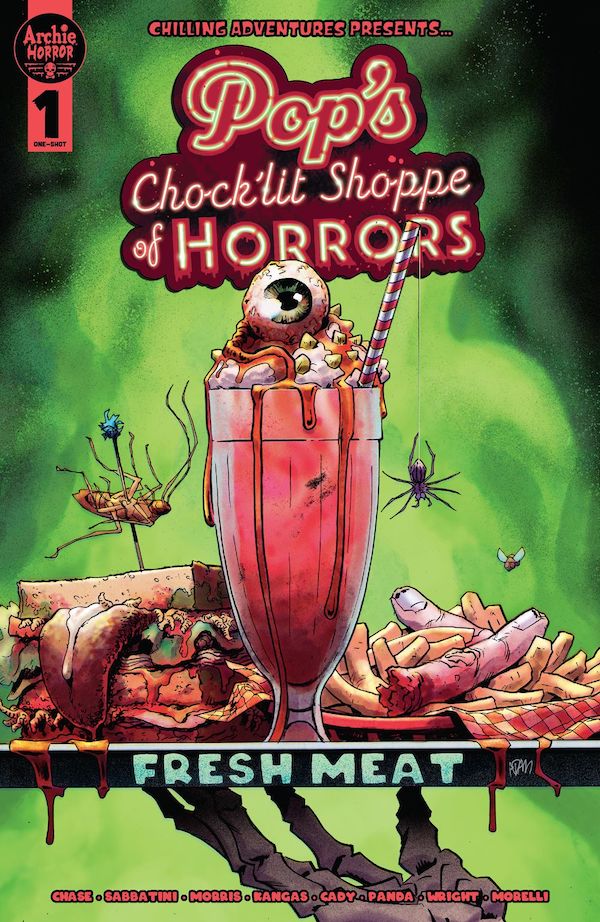
KS: Hypothetical time: I can hook you up to a machine Matrix style and upload instant expertise in any skill you wish. This can be something you’re already competent in but want to be better, or something you have no aptitude for at all. Amy will now be an expert __.
AC: Oh man, I want to say art! Because then I could make even more comics, or at least get ideas out of my head faster. But also, I’d inevitably find a way to be lazy about that. I’m also a leftie so I’d end up smearing a lot of drawings. So, I’m going to go with playing piano. I tried to learn as a child but despite all my speed with typing, my fingers lack the dexterity and coordination to play an instrument. And I really love music, despite having no aptitude or understanding of the technical aspects of it.
KS: Hypothetical Part II: Comic Book Hall of Fame… You get to induct one title from history that you’d say represents the medium at its finest. What gets your plaque?
AC: If it was one single issue, I’d pick Hawkeye #11, the Pizza Dog issue by Matt Fraction, David Aja, Matt Hollingsworth and Chris Eliopoulos. It’s frustratingly clever, incredibly beautifully laid out, and shows the true strength of offbeat, quirky visual storytelling, all without drowning a page in exposition or dialogue. It was the first highly stylized comic I read that really broke the mold and it will forever hold a place in my heart for that.
If it’s a series, I’m going to pick a more recent one: The Many Deaths of Laila Starr by Ram V, Filipe Andrade, Ines Amaro, and Andworld Design. A gorgeous, tight miniseries. I don’t think I’ve ever cried more reading a comic, though “Death of the Mighty Thor” came close, because this one was just astonishingly beautiful, carefully metered, and yet absolutely sumptuous with color and heart and existential discussions of life and death. I think that’s truly one of those once-in-a-generation comics that I’m grateful I got to experience monthly, and it sold me on anything that particular creative team ever wants to do again in the future.
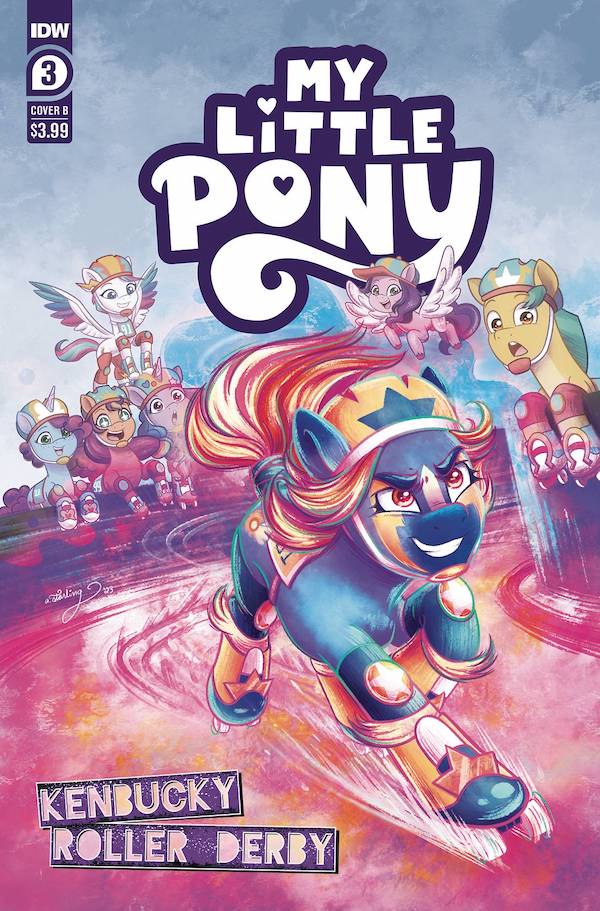
KS: To wrap up, please let readers know what you have out and what’s coming for 2024.
AC: The latest of my already-announced books just came out with IDW’s My Little Pony: Kenbucky Roller Derby #3 – Kate Sherron is a true art hero for drawing half a dozen ponies on sixteen wheels each, which I feel like in any other comic scenario would get me burned at the stake for putting in a script.
My other recent releases include Dungeons & Dragons Ravenloft: Caravan of Curses (IDW), an oversized fantasy-horror one-shot co-written with Casey Gilly and brought to life by four different art teams of exceptional caliber, and Pop’s Chock’lit Shoppe of Horrors: Fresh Meat (Archie Comics), a prequel to last year’s horror one-shot and my professional comics debut. A really exciting full-circle moment for the first major year of my career.
I also have an official Ghostbusters Tarot Deck and Guidebook coming out in late May from Insight Editions, which is a lot of fun for tarot enthusiasts and newcomers alike, and features a fully illustrated deck by Ben Turner. Beyond that, everything I’m working on is a great big secret! But I can say I’m certainly not sitting around on my hands – I’m hard at work scripting some very exciting stuff across genres and styles I haven’t done much of yet. There will be some more anthologies, as well as other top-secret things I can’t wait to share soon. I really feel like I’m only just getting started with what I hope to achieve in comics, and look forward to where the journey takes me. And I hope readers stick around to find out more!

